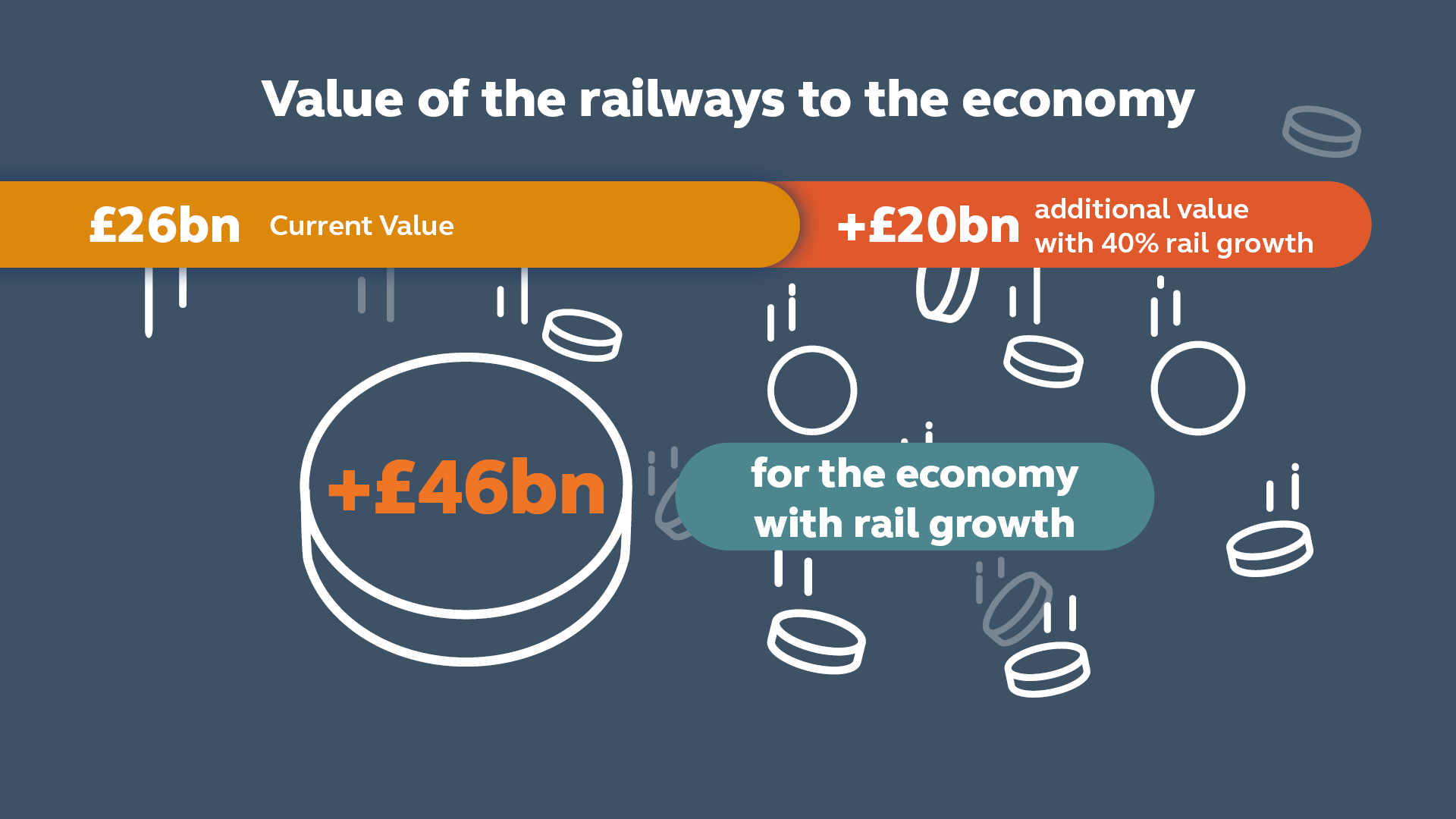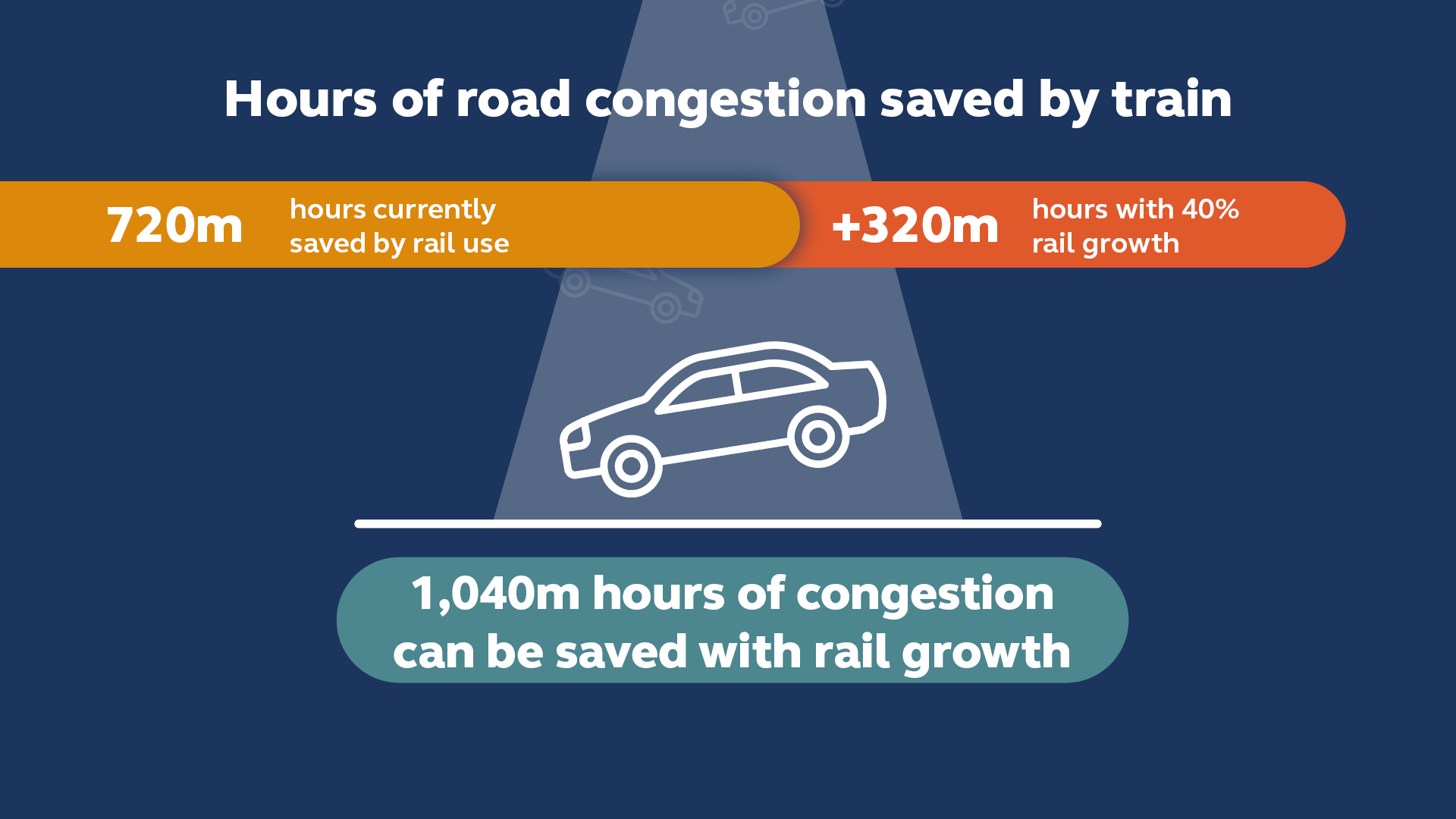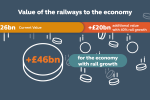Great Britain’s railways contribute significantly to the economic success of the country: new research from WPI Economics, commissioned by Rail Delivery Group, reveals the rail industry generated £26 billion in economic, environmental and social benefits to UK over the past year, with rail customers contributing £98 billion through spending within local communities.
With the rail network facilitating over three million journeys each day, its impact on the UK economy is significant, playing a key role in the productivity of our cities and towns. The industry also directly employs over 103,000 people across varying roles – from station staff and train drivers to underwater divers and seasons delivery managers.


The UK’s rail network does more than simply transport us from A to B; it plays a crucial role in driving economic growth by connecting businesses and communities, improving productivity, and supporting the transition to net zero.
The creation of Great British Railways is an opportunity for the rail industry to come together and make the improvements that are needed to attract more people to rail, unlocking even greater value for the economy, environment, and wider society.
Rail can and must be the backbone of the country’s future growth and environmental ambitions.
Unlocking future growth potential


- £1.18bn passenger benefits
- £660m value of decreased congestion
- £360m additional benefits – in wider environmental & societal benefits and economic impacts.

- £390m passenger benefits
- £200m value of decreased congestion
- £160m additional benefits – in wider environmental & societal benefits and economic impacts.

- £5.44bn passenger benefits
- £4.69bn value of decreased congestion
- £880m additional benefits – in wider environmental & societal benefits and economic impacts.

- £270m passenger benefits
- 80m value of decreased congestion
- £60m additional benefits – in wider environmental & societal benefits and economic impacts.

- £1.16bn passenger benefits
- £600m value of decreased congestion
- £340m additional benefits – in wider environmental & societal benefits and economic impacts.

- £900m passenger benefits
- £100m value of decreased congestion
- £170m additional benefits – in wider environmental & societal benefits and economic impacts.

- £1.98bn passenger benefits
- £580m value of decreased congestion
- £640m additional benefits – in wider environmental & societal benefits and economic impacts.

- £660m passenger benefits
- £230m value of decreased congestion
- £220m additional benefits – in wider environmental & societal benefits and economic impacts.

- £240m passenger benefits
- £140m value of decreased congestion
- £130m additional benefits – in wider environmental & societal benefits and economic impacts.

- £690m passenger benefits
- £530m value of decreased congestion
- £260m additional benefits – in wider environmental & societal benefits and economic impacts

& the Humber
- £760m passenger benefits
- £580m value of decreased congestion
- £280m additional benefits –in wider environmental & societal benefits and economic impacts
Supporting the transition to net zero
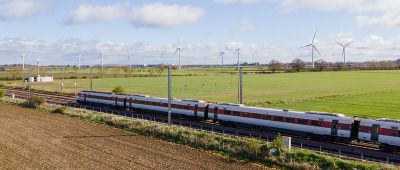
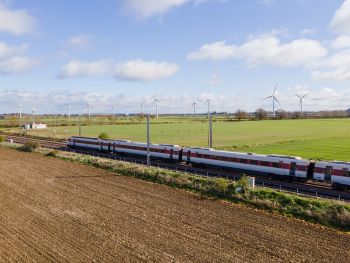
The fast-charging technology that we use on this train helps to unlock the potential for significant carbon reductions across the network. Because electric trains are so efficient, if you go by electric train, that’s about 17 times less the emissions than going in an electric car.
The Rails to Roots group is a gardening group. We thought it would be a really lovely project to set up a wellbeing garden at Ridgmont Station Heritage Centre. The vision was always to become a showcase for community rail, and also become a new reason for people to travel along this lovely line.
How Rail Fuels Local Businesses Across Great Britain
Businesses located in and around rail stations are crucial to local economies. Almost three quarters of customers (73%) see their local station as important to helping the local economy and businesses to thrive. This is further evidenced by spending figures with customers reporting an average spend of £80 per complete journey. Based on the 1.23bn passenger journeys undertaken in 2023, rail customers could contribute £98bn annually to local economies as part of their journey.
Being inside the station is good for us because we’ve got so many potential customers walking past about 15 (15,000) to 55,000 people per day. Rail is very important to the local economy because it brings in a lot of potential money.
The rail network does really help business with outreach to different areas across Yorkshire, not just locally in York. It helps with our customer base, but in general we’re getting a better employment group as well.
Our town has a population of about 20,000 people, and we have about 65,000 visitors a year. So the station literally helps bring those people to us. Train stations are vital to businesses like us.
Supporting independent businesses

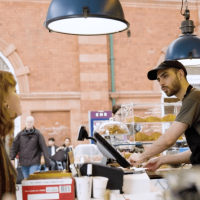
This insightful report reinforces what we know about the importance of train travel for hospitality and tourism. Trains help bring our customers – domestic and international and our employees to our doors, so we can deliver great experiences and boost economic growth.
We are looking forward to working with the rail industry to further grow the opportunities to reach all parts of our nation and spread the benefits of the hospitality sector.
The company decided to sell here because it’s one of the main streets, but the fact that the train station is visible was a huge factor in picking out the property. So, when people get off the train, they can actually see the pink store and that brings customers into the store, which is great for us.
Railway is important for local businesses because we are independent and we do need those customers to support us all.
Edinburgh Waverley is really important to us as a business because we’re right next to it and it brings tourism to us all the time. Bringing in more people to the city means more businesses getting more customers, which can then in turn mean more profits. And then that can be reinvested into the businesses and communities.
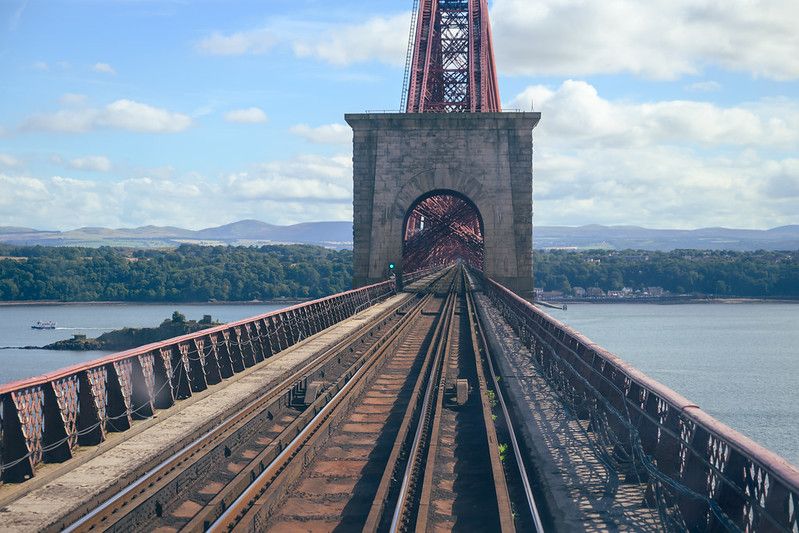
Changes needed to enable growth
To achieve 40% rail growth by 2035 and enjoy the benefits this will bring to the economy, communities, local businesses and environment we would require additional investment on infrastructure, there is an opportunity within the current system to accelerate growth by increasing customer numbers through the level of service provision.
To make that possible, it is important the rail industry continues its work to bolster the attractiveness of rail to customers, which means focussing on getting the basics right - from improved performance, to improving accessibility and enhancing customer experience.
